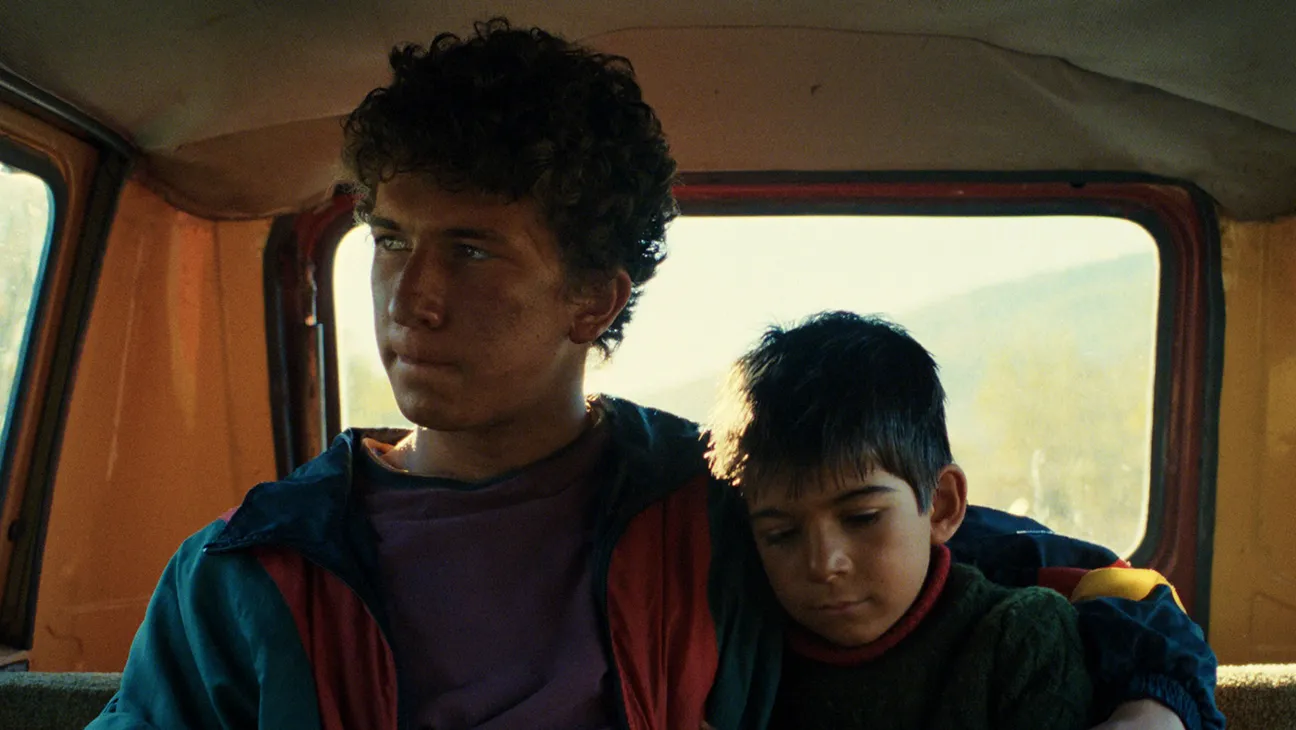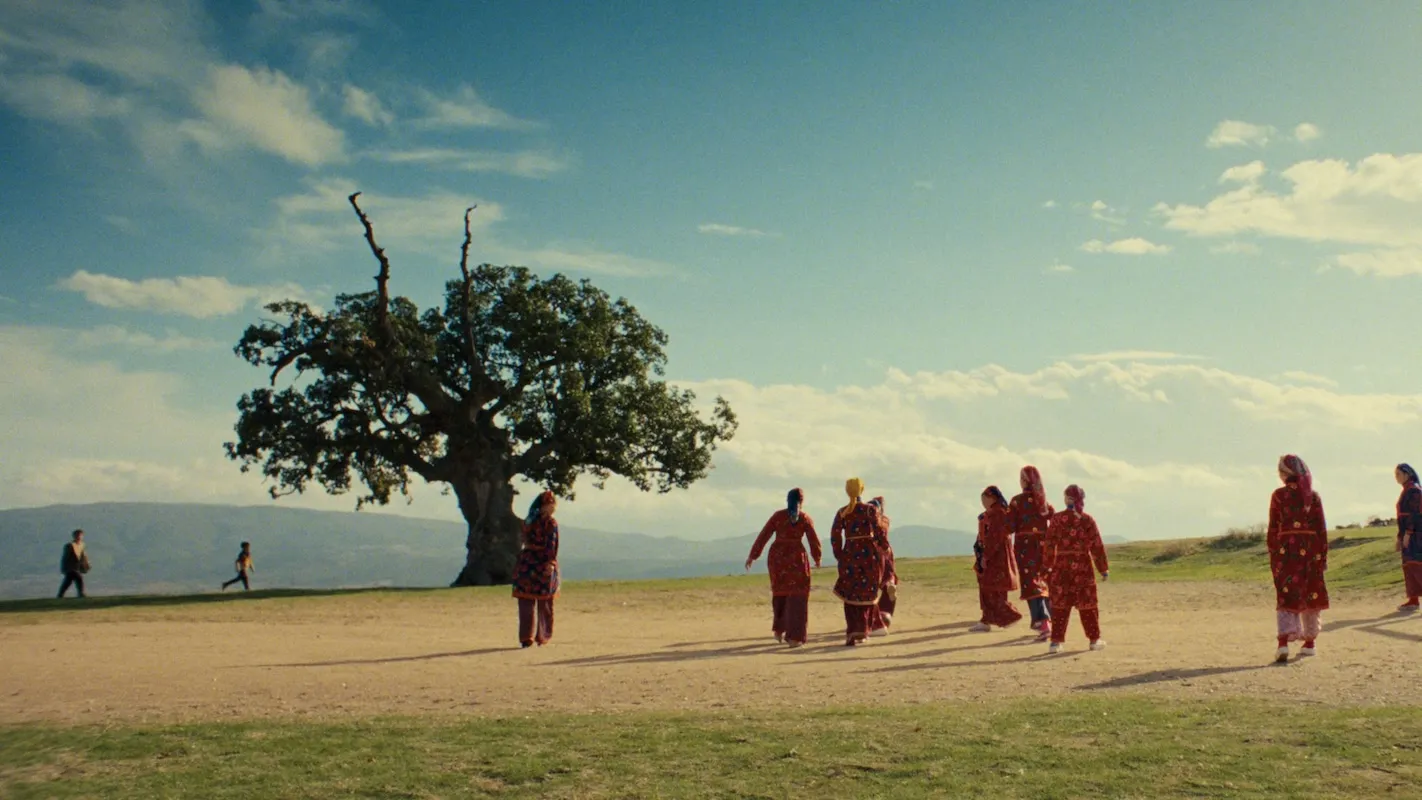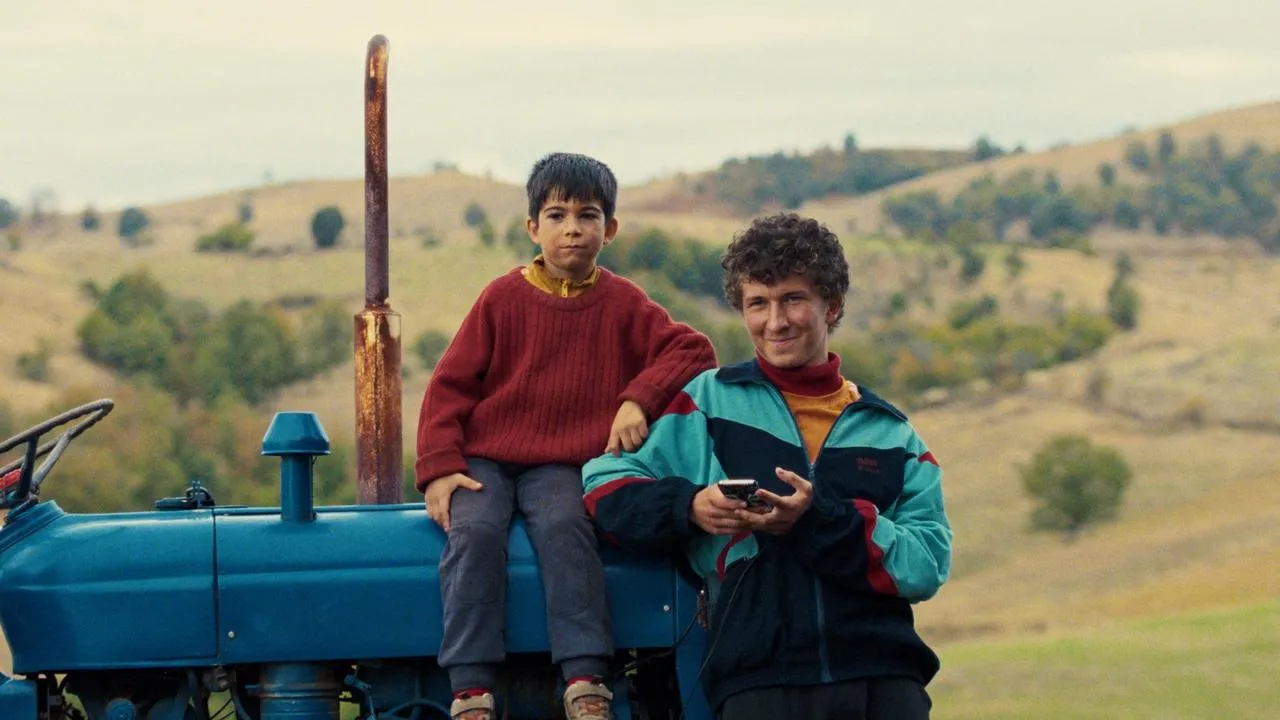The film follows a 15-year-old shepherd whose life in a remote North Macedonian village is transformed by his encounter with electronic dance music. The young protagonist is withdrawn from academic life by family duty and thrust into a world of agricultural labor, where the weight of tradition looms large. This early disruption sets the stage for a narrative that contrasts the enduring routines of rural existence with the disruptive force of modern sound.
A critical moment emerges when a missing sheep triggers unforeseen events. This accident leads him to an unsanctioned gathering where the throb of electronic beats shatters the quiet of his familiar environment. As the story progresses, his bond with a local girl deepens.
Her personal struggles with imposed marital arrangements mirror his silent wish to break free from long-established customs. Their interaction casts a new light on the limitations imposed by their conservative setting.
The plot alternates between the calm predictability of daily farm life and instances of bold, spontaneous rebellion. Scenes shift from intimate family conflicts to moments that stir the collective spirit of the community. A notable instance occurs when the protagonist seizes control of a mosque’s sound system, triggering an upheaval that challenges the village’s rigid social order.
Faces of Change: Character Portraits in Focus
Ahmet stands at the center of the film as a young shepherd caught in a life of responsibility while dreaming of a different existence. His daily routine of tending to sheep and meeting rigid family expectations contrasts sharply with his secret passion for rhythmic beats. This character represents the tension between a predetermined way of life and the pull of modern influences.
His internal battle is evident when he listens to his electronic music, which serves as an escape from his confined reality. His transformation, marked by moments of quiet defiance and bold actions, mirrors themes often seen in Indian parallel cinema where characters break free from societal constraints.
Aya appears as a figure of liberation in a conservative environment. Living in a similar world of restrictions, she expresses herself through subtle acts of rebellion against a future arranged without her consent. Her character is not merely a supporting role but a key element in inspiring Ahmet to rethink his circumstances.
Their exchanges, filled with unspoken understanding and shared dreams, provide a counterpoint to the strict structures imposed by their families. In a manner reminiscent of the nuanced female portrayals in Bollywood classics, Aya embodies both vulnerability and strength.
The family unit in the film is portrayed through distinct personalities that reflect the tensions of a traditional society. The father’s authoritarian manner creates a palpable conflict with his sons, particularly with Ahmet’s silent younger brother, Naim, whose quiet suffering hints at deeper emotional scars following a personal loss. Village figures, with their adherence to customs, add layers to the narrative by emphasizing how communal pressures shape individual behavior.
The casting of new faces brings a raw, authentic feel to the screen. Their performances are marked by a natural delivery that highlights the subtle yet significant shifts in relationships and attitudes. The interactions among these characters create a narrative rich in cultural symbolism and emotional nuance.
Cultural Dissonance and Aesthetic Resonance in ‘DJ Ahmet’
The film presents a striking display of conflicting forces, set against the backdrop of a traditional North Macedonian village. Strict social structures and long-held patriarchal norms limit the freedom of its inhabitants.
In this confined environment, the use of modern electronic music and the unconventional hijacking of the mosque’s sound system serve as unexpected emblems of defiance. These elements interrupt the established order, marking moments when personal expression challenges rigid customs.
Music plays a central role, operating on two levels: as a sound track that mirrors the emotional states of the characters and as a narrative tool that drives the unfolding events. The film’s audio landscape blends sounds that belong directly to the scenes with musical cues that exist in the character’s mind.
This duality lends the score a life of its own, supporting the depiction of Ahmet’s quest for self-determination. The pulsating beats reflect his internal conflict and desire for liberation, offering a counterpoint to the monotony of rural obligations.
The expansive natural settings of the film are employed as visual markers of potential and freedom. The endless skies and sweeping rural vistas highlight the contrast between a static, prescribed existence and the energetic pulse of modern sound. These visual components contribute to an overall commentary on the restrictions imposed by tradition, using the physical landscape as a metaphor for both confinement and the possibility of change.
Family dynamics and the broader social fabric are similarly exposed through recurring visual motifs. The golden light that bathes key moments, the wandering sheep that disturb the calm, and the unpredictable performance of technology all work together as symbols. Each of these elements adds a layer of meaning to the film’s exploration of self-discovery, reflecting the tension between inherited customs and the urge to break away.
Frames of Freedom: Visual Narratives in ‘DJ Ahmet’
The film displays a keen reliance on natural, golden light that casts a warm glow over the rural landscapes, setting a tone of both familiarity and subtle defiance. The director and cinematographer work in unison, using slow-motion shots during dance sequences and dynamic camera movements that capture the energy of rave scenes.
This approach recalls the kinetic visual style seen in certain parallel cinema movements in India, where every frame is charged with emotional subtext.
Expansive vistas and low horizons are not mere backdrops but serve as silent storytellers of the characters’ inner lives. The open fields contrast sharply with the cramped, shadowed interiors of the village homes.
This contrast brings forth the tension between the restrictive nature of tradition and the freeing pulse of modern influences. For example, the sequence where a lost sheep wanders across a sunlit field becomes a visual metaphor for the unexpected disruptions in an ordered life.
The color scheme, dominated by warm hues punctuated by brief, vivid flashes, mirrors the internal states of the characters. These deliberate visual choices echo techniques in classic Bollywood films that use color to signal shifts in mood. The director’s vision is supported by careful framing and composition, which guide the viewer’s focus to key narrative moments.
The meticulous collaboration between the director and the director of photography results in a style that not only captures the rustic charm of the setting but also highlights the subtle defiance pulsing beneath the surface.
Soundscapes of Liberation: Music in ‘DJ Ahmet’
Music forms the heartbeat of this film, steering Ahmet’s life from the confines of a predetermined rural existence toward a realm of personal expression. The soundtrack plays an active role in narrating Ahmet’s struggles and aspirations.
Electronic beats interlace with natural ambient sounds, a combination that mirrors the tension between the familiar and the unknown in his world. In several scenes, the auditory experience transforms a routine moment into an evocative statement of defiance. For instance, during the clandestine rave, the pulsating rhythm becomes a force that disrupts traditional expectations and hints at a future shaped by youthful desire.
The film employs sound design in a manner that connects directly with the characters’ internal landscapes. Music is woven into the fabric of Ahmet’s reality; it is heard as if it is a part of his thoughts, underscoring his longing for freedom.
A recurring motif—a particular sequence of electronic notes—appears whenever Ahmet experiences a breakthrough in self-understanding. This refrain mirrors the narrative arcs found in Indian parallel cinema, where musical cues often signify transformation and resistance.
The technical mix between diegetic and ambient elements creates an experience that touches on both sensory delight and emotional insight. Scenes of quiet reflection gain depth when subtle sound layers enhance the visuals, while energetic sequences burst into life with dynamic beats. Such choices enrich the film’s visual storytelling, allowing the soundtrack to influence the pace and mood, and provide a window into the inner workings of the protagonist’s mind.
Cultural Crossroads: Tradition Meets Modernity
Set in a remote North Macedonian village, the film paints a portrait of a place where customs are held in high regard and daily life is shaped by timeworn religious and familial practices.
The village is depicted as a microcosm of enduring traditions, where the expectations of elders and the established social order have defined the lives of its inhabitants for generations. The visual and narrative details bring to mind the careful character studies found in Indian parallel cinema, where every gesture and ritual carries significant weight.
A pronounced divide emerges between the conservative outlook of the older generation and the aspirations of the younger characters, who are drawn to new ideas and forms of self-expression. Modern elements such as electronic dance music and the use of smartphone technology make their mark on the narrative, serving as instruments that quietly upend established norms.
The film offers scenes where these contemporary forces infiltrate everyday routines, prompting subtle acts of resistance. The rebellious spirit of the protagonist, for example, is expressed not through overt confrontation but by embracing sound and digital connectivity, which spark a quiet transformation within his community.
Global influences are interlaced with local traditions throughout the narrative, providing a lens through which viewers can observe the evolution of cultural identity. The infusion of rave culture and the prominence of modern communication tools illustrate how even isolated communities are impacted by worldwide trends.
This blend of the old and the new prompts a reflection on the nature of personal freedom and social control, inviting audiences to consider how longstanding practices can coexist with emerging forms of expression. The film’s exploration of these themes encourages a discussion about maintaining heritage while welcoming the new, a topic that resonates widely across diverse cultural landscapes.
The Review
DJ Ahmet
This film offers an engaging look at a traditional community confronting modern influences, highlighted by a spirited soundtrack and sincere performances. It captures the tension between old customs and emerging self-expression with subtle nuance. A memorable mix of heart and humor, the film invites reflection on cultural change while entertaining its audience.
PROS
- Fresh portrayal of youthful rebellion
- Authentic cultural setting and visual style
- Strong naturalistic performances
CONS
- Predictable narrative arcs at times
- Some underdeveloped secondary characters



















































